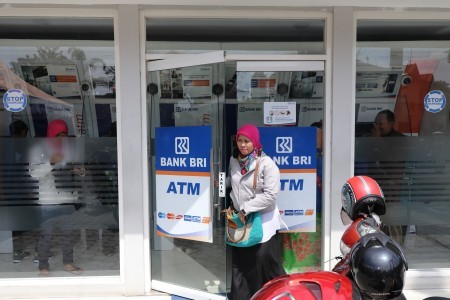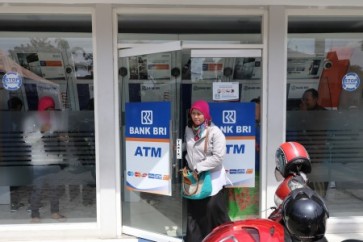Popular Reads
Top Results
Can't find what you're looking for?
View all search resultsPopular Reads
Top Results
Can't find what you're looking for?
View all search resultsValuable lessons from ATM skimming case
ATM-related crime is common in Indonesia and has caused losses of hundreds of billions of rupiah to bank customers. Banking crime is an operational risk.
Change text size
Gift Premium Articles
to Anyone
A
t least 30 customers of state-owned Bank Rakyat Indonesia (BRI) in Kediri, East Java, lost a total of Rp 145 million (about US$10,150) due to unauthorized withdrawals from their accounts.
After checking with BRI officials, they found out that the money had been withdrawn through automatic teller machines (ATMs) in Germany and Greece. According to newspaper reports, the thieves used a method known as ATM skimming. Police have reportedly arrested five Romanian and Hungarian nationals allegedly involved in the skimming scheme.
So, what are the valuable lessons for banks and their customers? ATM-related crime is common in Indonesia and has caused losses of hundreds of billions of rupiah to bank customers. In fact, Bank Indonesia (BI) and the Financial Services Authority (OJK) have issued a number of regulations to protect banks and bank customers from banking fraud, which has become more and more sophisticated.
The rapid proliferation of financial technology (fintech) companies also poses risks. The central bank and the OJK should therefore closely monitor the rapidly growing fintech industry to protect the new financial ecosystem and its customers. Rules are needed to protect the customers, but the financial authorities should continue to provide a space for fintech companies to grow.
For the banking industry, they should to continue to improve and update their technology to improve risk management. Banking crime is an operational risk. Michel Crouhy, Dan Galai and Robert Mark (2000) define operational risk as a risk associated with business operation.
This risk includes two components. The first of these, the risk of operational failure or internal risk, stems from human resources, processes and technology. The second, operational strategic risk or external risk, arises from factors like politics, taxes, regulations, government, society and competition.
Common bank fraud appears mostly in the form of ATM-related crime and unauthorized use of credit cards, the double payment of a money transfer, bank draft taken by unauthorized parties, false on-call deposits, false bank guarantees, false letters of credit, incorrect data entry, system failure, programming errors or telecommunication failures. They are examples of operational risk.


















